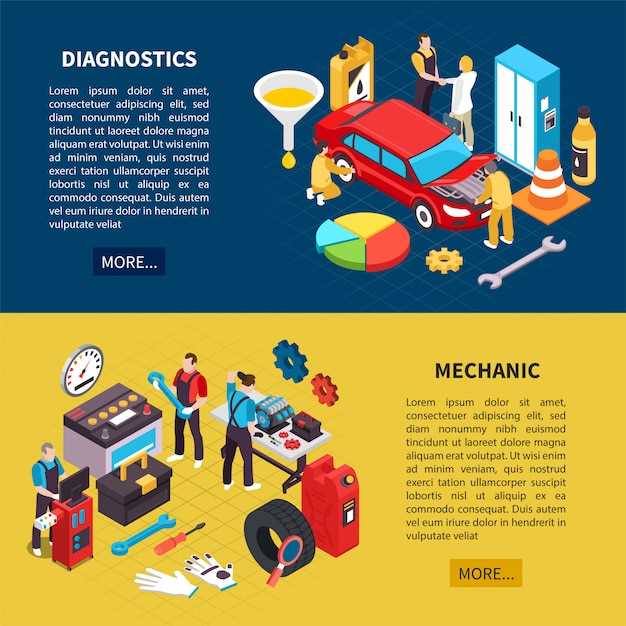
How to troubleshoot poor engine performance
- Dominique Kaye
- 0
- Posted on

Experiencing a misfire or noticeable drop in engine performance can be incredibly frustrating for car owners. Understanding the underlying causes often requires diligent troubleshooting and a systematic approach to identify potential issues. From fuel delivery problems to ignition system failures, numerous factors can contribute to poor engine performance.
One of the first steps in troubleshooting is to recognize the symptoms of a misfire. This can include rough idle, loss of power, or abnormal fuel consumption. By pinpointing these symptoms, you can narrow down the search for the root cause. Being observant and methodical can save time and resources during the diagnostic process.
Effective troubleshooting requires a blend of technical knowledge and practical experience. In this article, we will explore various tips and techniques to help you diagnose and resolve common performance issues. Whether you are a seasoned mechanic or a DIY enthusiast, these insights can empower you to take control of your vehicle’s performance.
Identifying Symptoms of Engine Misfire
Engine misfire is a condition characterized by the failure of one or more cylinders to ignite properly, leading to poor engine performance. Troubleshooting misfire symptoms early can prevent further damage and improve vehicle operation. Common signs of an engine misfire include a rough idle, noticeable vibrations, and a lack of power during acceleration.
A rough idle is often the first indication of a misfire. The engine may shake or exhibit irregular RPM fluctuations while at a standstill. Listening for unusual sounds, such as popping or backfiring, can also signal trouble. These noises typically stem from unburnt fuel igniting inappropriately within the exhaust system.
Another symptom is reduced power during acceleration. Drivers may experience sluggishness when attempting to accelerate, as misfire disrupts the normal combustion process. This can result in a feeling of hesitation and an overall lack of responsiveness from the engine.
Additionally, the engine’s warning light on the dashboard may illuminate if a misfire is detected by the vehicle’s onboard diagnostics. A check engine light can indicate a range of issues, but pairing it with the other symptoms can point specifically to a misfire condition.
Excessive fuel consumption can also result from engine misfire due to inefficient burning of fuel. If a vehicle suddenly begins to require more fuel than usual, it may be worthwhile to investigate potential misfire issues.
Monitoring these symptoms is key in the troubleshooting process. Addressing engine misfire early can save time and costly repairs while ensuring optimal engine performance.
Common Causes of Poor Engine Performance

Poor engine performance can lead to a frustrating driving experience and decreased fuel efficiency. Understanding the common causes can help in troubleshooting and resolving the issues effectively.
- Fuel Issues:
- Contaminated Fuel: Dirt or water in the fuel system can disrupt combustion.
- Low Fuel Pressure: Insufficient fuel reaching the engine can lead to misfire and poor performance.
- Clogged Fuel Filter: A blocked filter can restrict fuel flow, affecting engine efficiency.
- Ignition Problems:
- Worn Spark Plugs: Failing spark plugs can cause misfires, leading to rough idling and hesitation.
- Faulty Ignition Coils: If coils are malfunctioning, the spark may not ignite the fuel-air mixture effectively.
- Incorrect Ignition Timing: Timing issues can result in a loss of power and engine knocking.
- Air Supply Issues:
- Clogged Air Filter: A dirty air filter reduces airflow, affecting combustion and overall engine performance.
- Faulty Mass Airflow Sensor (MAF): A malfunctioning MAF sensor can provide inaccurate readings, leading to poor fuel mixture.
- Vacuum Leaks: Leaks in the intake system can lead to an incorrect air-fuel ratio and misfire.
- Exhaust System Problems:
- Blocked Catalytic Converter: A clogged converter can restrict exhaust flow, decreasing engine power.
- Leaking Exhaust Manifold: A leak can result in poor engine performance and increased emissions.
- Engine Management Issues:
- Faulty Engine Sensors: Malfunctioning sensors can disrupt the engine management system, causing poor performance.
- Outdated Engine Software: Software updates may resolve known performance issues and improve efficiency.
Identifying and addressing these common causes can enhance engine performance and prolong the lifespan of your vehicle.
Step-by-Step Guide to Diagnose and Fix Engine Issues

Effective troubleshooting of engine problems requires a systematic approach. Follow these steps to identify and resolve common engine issues.
1. Gather Information: Start by collecting information about the engine’s symptoms. Listen for unusual sounds, note any warning lights on the dashboard, and observe changes in performance such as stalling or decreased acceleration.
2. Verify the Basics: Check the fuel level and ensure that you are using the correct octane rating. Inspect the battery for corrosion or loose connections, as these can impact engine performance.
3. Conduct a Visual Inspection: Examine the engine compartment for any obvious signs of trouble. Look for leaks, damaged wires, or disconnected hoses. Pay attention to the condition of belts and pulleys.
4. Read Diagnostic Trouble Codes (DTCs): Use an OBD-II scanner to retrieve any stored codes from the engine control unit. These codes provide valuable insight into potential issues and should be interpreted using manufacturer specifications.
5. Check the Air and Fuel Systems: Ensure that the air filter is clean and unobstructed. Examine the fuel filter for clogs and confirm that fuel injectors are functioning properly. Testing fuel pressure may also be necessary to rule out fuel supply issues.
6. Inspect the Ignition System: Check spark plugs, ignition coils, and wires for wear or damage. Faulty components in the ignition system can lead to misfires and poor engine performance.
7. Test Engine Sensors: Inspect key sensors such as the mass airflow (MAF) sensor, throttle position sensor (TPS), and coolant temperature sensor. Use a multimeter to check for correct voltage and resistance readings.
8. Evaluate Exhaust and Emission Systems: Look for exhaust leaks and examine the catalytic converter for clogs. A malfunctioning exhaust system can severely affect engine performance and efficiency.
9. Assess Engine Compression: Perform a compression test to determine the health of the engine’s internal components. Low compression may indicate issues such as worn piston rings or valve problems.
10. Test Drive and Reassess: After making any repairs, take the vehicle for a test drive to see if the issues have been resolved. Monitor engine performance and listen for any unusual noises.
11. Seek Professional Help: If the problem persists despite following the above steps, consider consulting a professional mechanic. Advanced engine diagnostics may require specialized tools and expertise.
By carefully following this step-by-step guide, you can effectively troubleshoot engine issues and implement the necessary fixes to restore optimal performance.
